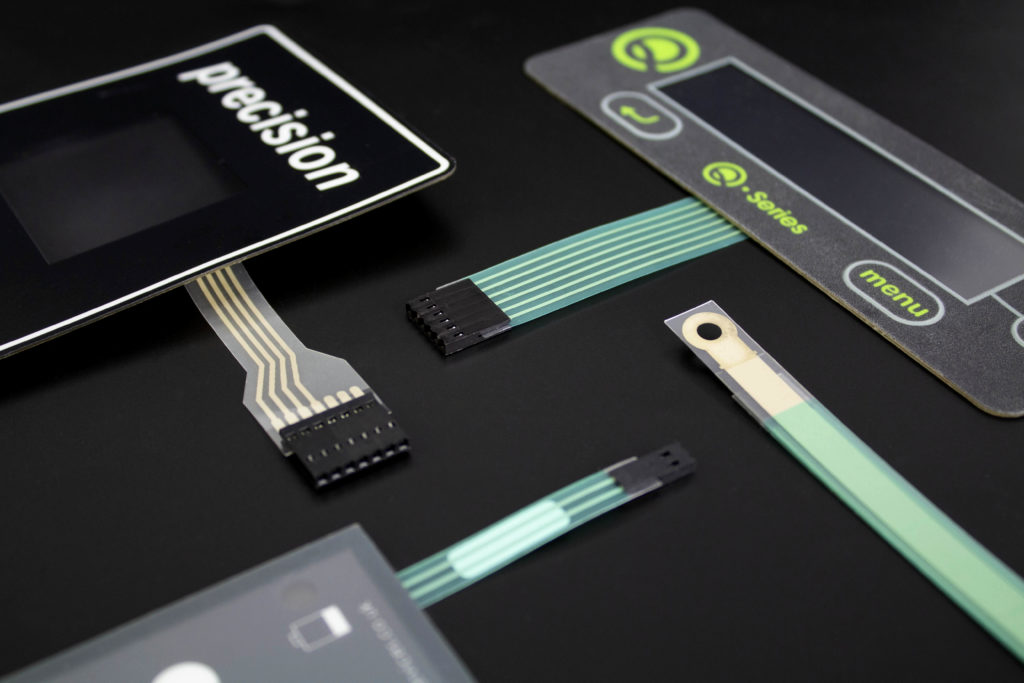Discover Exactly How Membrane Switches Function and Their Role in Modern Electronic Devices
Membrane Switches stand for an advanced integration of innovation and layout within the realm of modern electronic devices, offering as essential interfaces in numerous devices. Comprehending the intricacies of Membrane switch capability and their broader ramifications in improving user experience welcomes more exploration into their design, advantages, and the ingenious developments forming their future in innovation.
What Are Membrane Switches?

Membrane switches are differentiated by their longevity and resistance to environmental factors, such as dirt, moisture, and extreme temperatures. They can be customized with various graphics, shades, and responsive responses options, enhancing customer experience while keeping visual allure - membrane switches. Furthermore, the incorporation of printed circuits enables smooth assimilation right into gadgets, boosting general functionality.
The versatility of Membrane buttons is obvious in their ability to support both intricate and basic control features. They can include functions such as LED signs and touch-sensitive technology, accommodating certain individual requirements. As innovation remains to develop, Membrane Switches stay necessary for making it possible for user-friendly and effective interface, thereby playing a critical function in the development of modern-day digital tools.
Components of Membrane Switches
Membrane switches are made up of a number of key parts that function together to develop a trusted and useful interface. The key elements consist of the graphic overlay, glue layer, spacer layer, and conductive traces.
The visuals overlay functions as the user interface, usually published on an adaptable substratum such as polyester or polycarbonate. This layer not only provides visual appeal yet likewise consists of responsive feedback, aesthetic cues, and safety features. Under the visuals overlay lies the glue layer, which protects the switch to the tool and makes sure sturdiness against ecological stresses.
The spacer layer is critical for preserving the required space in between the graphic overlay and the circuit layer. This space permits the activation of the button when pressure is applied. The conductive traces, typically made from silver or carbon, develop the electrical paths that finish the circuit when the button is involved.
Additionally, a backing layer might be included for structural support and insulation. These elements collaborate perfectly, making sure that Membrane buttons are both easy to use and resistant, making them important in different contemporary digital applications.
Exactly How Membrane Switches Work
Exactly how do Membrane Switches function efficiently within digital tools? Membrane Switches run on the concepts of pressure-sensitive innovation, utilizing a split building that includes visuals overlays, sticky layers, and conductive aspects.
The read this post here design of Membrane switches is vital for their efficient operation (membrane switches). The layers are diligently crafted to provide tactile feedback, resilience, have a peek at this website and resistance to ecological aspects such as moisture and dirt. The inclusion of domes-- small, elevated areas within the button-- enhances responsive action, offering customers with a visible click experience upon activation
Additionally, Membrane buttons can be customized in regards to size, shape, and graphics, making them appropriate for various applications. They are commonly used in control panels, medical tools, and customer electronics because of their streamlined design and integrity. In general, the reliable functioning of Membrane buttons is pivotal in boosting individual communication and guaranteeing smooth procedure in modern-day digital devices.

Applications in Modern Devices
Utilizing their unique style and performance, Membrane buttons have actually become important parts in a variety of modern-day electronic devices. These flexible interfaces are utilized in consumer electronics, industrial devices, clinical gadgets, and automotive controls, supplying smooth individual communication.
In consumer electronic devices, Membrane buttons are frequently found in devices like microwaves, cleaning equipments, and other home devices, where they make it possible for instinctive control with a streamlined account. Their low-profile style helps with combination into compact tools, boosting aesthetic allure without compromising performance.
In industrial applications, Membrane Switches function as control board for equipment, providing longevity and resistance to harsh settings. Their capacity to stand up to moisture and contaminants makes them perfect for usage in production and processing industries.
Medical gadgets also take advantage of Membrane buttons, which are created to be very easy to clean and maintain, ensuring health in clinical setups. They are usually utilized in diagnostic tools, patient surveillance systems, and mobile medical gadgets, where reliability is critical.
Advantages of Membrane Switches
Among the essential advantages of Membrane buttons is their adaptability, which allows them to be tailored for a selection of applications across multiple markets. These buttons can be developed in different sizes and shapes, fitting unique product needs while offering seamless integration right into tools. Their slim profile makes it possible for a small and sleek style, often improving the visual allure of digital items.
Another considerable benefit is their resilience - membrane switches. Membrane switches are normally immune to dust, moisture, and chemicals, making them perfect for extreme settings. This durability expands their lifespan contrasted to traditional mechanical switches, minimizing the demand for constant substitutes
Furthermore, Membrane Switches deal cost-effectiveness. The production procedure includes printing innovations that reduce manufacturing prices, specifically for huge runs. This cost, integrated with low maintenance needs, makes them an attractive alternative for suppliers.

Conclusion
In conclusion, Membrane Switches stand for a significant innovation in customer interface innovation within modern electronics. As the need for intuitive and resistant user interfaces continues find here to grow, the duty of Membrane buttons in forming user experience will unquestionably expand.
Membrane Switches stand for an advanced combination of technology and layout within the realm of modern electronics, offering as necessary interfaces in countless gadgets.In the world of contemporary electronics, Membrane Switches offer as crucial parts that facilitate customer interaction with gadgets. As technology proceeds to evolve, Membrane Switches remain important for making it possible for user-friendly and efficient individual interfaces, therefore playing an essential function in the innovation of modern digital tools.
How do Membrane Switches function properly within electronic gadgets? In general, the reliable functioning of Membrane buttons is crucial in enhancing individual interaction and ensuring seamless procedure in modern-day digital gadgets.